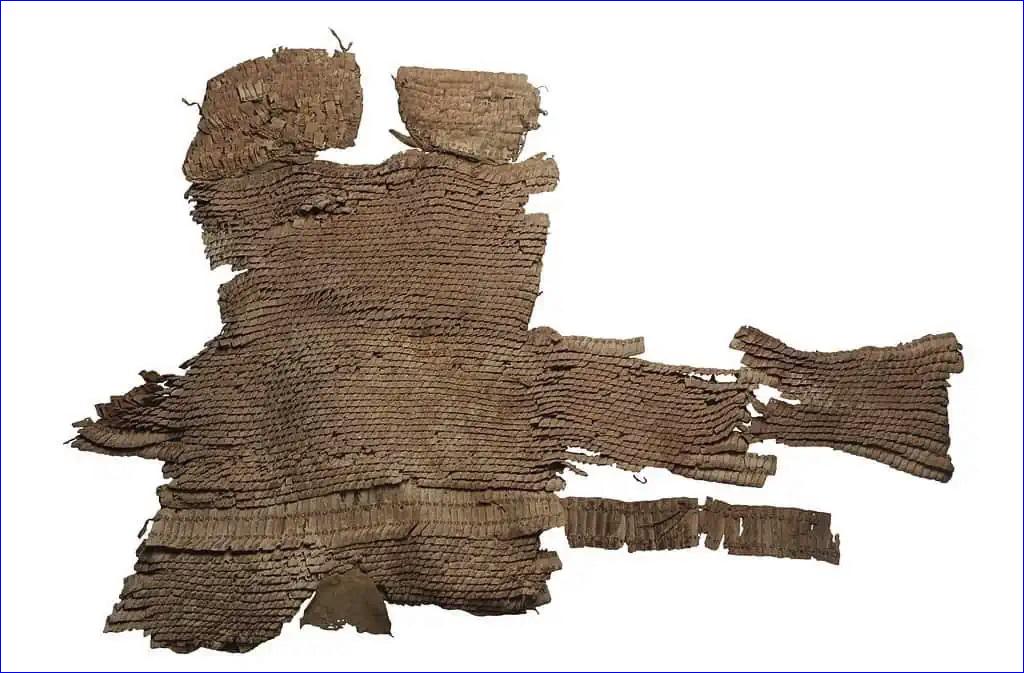


 D.L. Xu, P. Wertmann, M. Yibulayinmu.)
D.L. Xu, P. Wertmann, M. Yibulayinmu.)
In ancient times, armor would have been very precious. Scale armors, in particular, would have only been reserved for the elite -- and buying buried in one was a privilege very few could afford. Other types of armor, such as leather armor, also did a fairly good job, and were less expensive.
The goal of such armor was to protect the wearer's organs from many types of attacks without restricting their movement. Constructing this type of protection would have been a painstaking endeavor. Dated to approximately 2,700 years ago, the armor consists of about 5,444 smaller scales and 140 larger scales, which together with leather laces and lining weighed between 4 and 5 kg (about 9 to 11 lbs). These were strung together in a waistcoat that could fit people of different sizes and could be put on quickly without help.
Technological transfer
So far, so good -- it's a striking piece of armor and archaeologists were thrilled to find it. But here's the thing: it strongly resembles another set of armor from that time, one that currently lies in the Met Museum in New York City and was discovered in the Neo-Assyrian Empire.
The design and construction of the Yanghai armor bears a striking resemblance to Assyrian armor from the same period. This suggests a fascinating cultural exchange, where military technology from the Assyrian Empire, a dominant force in the Near East, found its way to China. This exchange alters our understanding of ancient Eurasian connections, revealing a more interconnected world than previously thought.
Researchers believe this type of armor later became part of standard military equipment, showing a remarkable technological transfer.
"The armor was professionally produced in large numbers," says Patrick Wertmann, study author. With the increasing use of chariots in Middle Eastern warfare, special armor for horsemen was developed from the 9th century BCE. This armor later became part of the standardized equipment of military forces of the Neo-Assyrian Empire, which extended from parts of present-day Iraq to Iran, Syria, Turkey and Egypt.
It's not clear how exactly the technological transfer was made, but it was impactful.
Building bridges
Although we can't trace the exact path of the scale armor from Assyria to Northwest China, the find is a rare piece of actual evidence of West-East technology transfer across the Eurasian continent during the early first millennium BCE, says Wertmann. The rise of cavalry units and the increasing use of horse riding in the first millennium BCE were game changers in ancient warfare. The Yanghai armor's design caters to the mobility and agility required by cavalry. It marks a significant evolution in military technology.
This discovery opens the door to further archaeological exploration and research. This unique find challenges existing notions of ancient cultural interactions and encourages a re-evaluation of historical narratives. It is not just a relic of the past; it's a bridge that connects distant cultures and epochs, reminding us of how interconnected human history really is.

or register to post a comment.